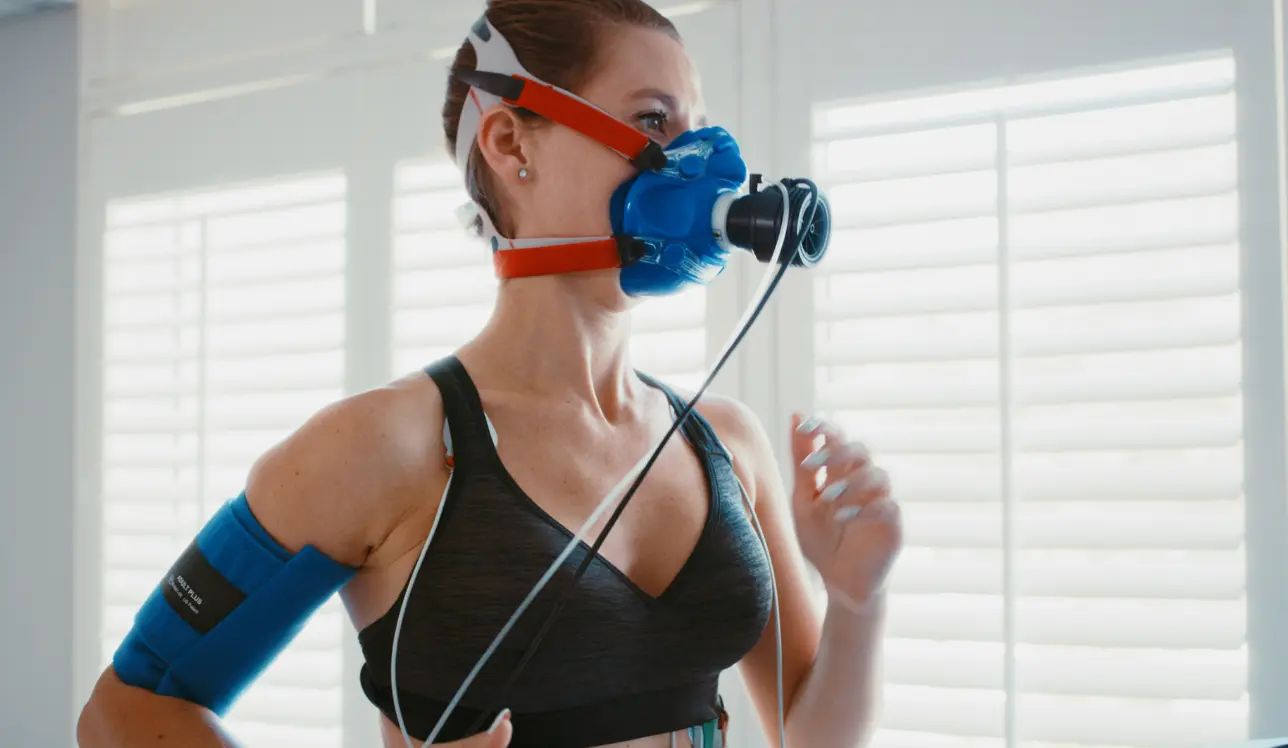Zone-2 Workout: Low-Intensity Cardio for a Longer Life
Zone-2 training isn't just for elite runners -- it's one of the most research-backed ways to improve mitochondria, increase endurance and influence the body's aging.

Introduction
Zone 2 is the training zone where you can still talk — but the body works deeply.
This type of low-intensity cardio builds mitochondria, improves insulin sensitivity and lays the foundation for a longer, more energy-filled life.
Understanding and using Zone-2 training in your weekly routine is one of the easiest longevity investments you can make.
And yes, you don't have to run.
What is Zone-2 training?
Zone 2 is a heart rate zone equivalent to about 60-75% of your maximum heart rate.
You should be able to carry on a conversation without panting.
The body uses fat as its primary fuel, the mitochondria (the cell's energy factories) work efficiently, and lactic acid is kept low.
Research shows that this particular exercise intensity improves metabolic health, cardiac capacity and mitochondrial function -- three keys to healthy aging.
Why Zone-2 Training Benefits Your Long-Term Health
- Strengthens mitochondria “Zone 2 increases both the number and quality of mitochondria.
- Improves fat burning “You'll be better at using fat as fuel, which balances blood sugar.
- Helps the heart — The stroke volume increases and the resting heart rate decreases.
- Mitigates stress levels “Unlike high-intensity exercise, cortisol levels do not increase significantly.
A 2023 systematic review notes that Zone-2 training is effective in improving VO₂max, mitochondrial function, and metabolic health in both healthy adults and people with type 2 diabetes.
How to Find Your Zone-2 Heart Rate
- Calculate your maximum heart rate:
220 minus your age (ex: 220—40 = 180 bpm). - Calculate your Zone 2:
60-75% of the maximum heart rate. For a 40-year-old, it will be 108—135 bpm. - Use the talk test:
Can you say a whole sentence without getting out of breath? Then you lie right.
Example: Training plan in Zone 2
- Beginners: 3 sessions per week, 30 minutes per time. Example: walk in hilly terrain.
- Means: 4 sessions per week, 40 minutes per time. Examples: leisurely jogging, cycling or rowing.
- Advanced: 5 sessions per week, 60 minutes per time. Examples: long bike workouts or trail running.
Zone-2 training works great with walking, cycling, rowing, swimming, or any activity -- as long as you maintain the right heart rate.
How to Get More Out of Exercise
- Exercise fasting at times “Then fat burning is stimulated even more.
- Build in recovery “Zone 2 is gentle, but the body still needs rest.
- Replenish with proper nutrition “A daily scoop of Relivo provides you with 38 micronutrients that support energy metabolism, muscle function and recovery.
- Drink water, not sports drinks Zone 2 does not require fast carbohydrates.
Common mistakes
- You run too hard — and end up in Zone 3
- You exercise for a short time — the effect comes after 30+ minutes
- You skip everyday life — consistency beats intensity
FAQ
Is it better than intervals?
Zone 2 provides the base, intervals tops the shape. But for longevity, Zone 2 is a safe foundation.
Do I need a heart rate monitor?
No, but it makes it easier. The talk test works nicely to start.
Can I do it every day?
Yes -- it is low load and promotes recovery.
Summary
Zone-2 training is calm on the surface but powerful in depth.
By building mitochondria and improving your fat burning, you are laying the foundation for more energy and a longer life.
Three hours a week is enough — but you'll want to keep going when you notice the difference.
References
- Laursen PB, Mujika I. Science and application of high-intensity interval training. Sports Med. 2023; 53:1021—1036.
- Seiler S. What is best practice for training intensity and duration distribution in endurance athletes? Int J Sports Physiol Perform. 2024; 19 (Suppl 1) :1—10.
- Granata C et al. Mitochondrial adaptations to endurance training: How to optimize mitochondrial health. J Appl Physiol. 2023; 134 (5) :1101—1112.
- Keating SE “et al. Exercise a nonalcoholic fatty liver disease: A systematic review and meta-analysis. J Hepatol. 2023; 78 (1) :16—29.
- Ristow M, Schmeisser S. Extending lifespan by increasing mitochondrial ROS. Free Radic Biol Med.2021; 150:149—155.









